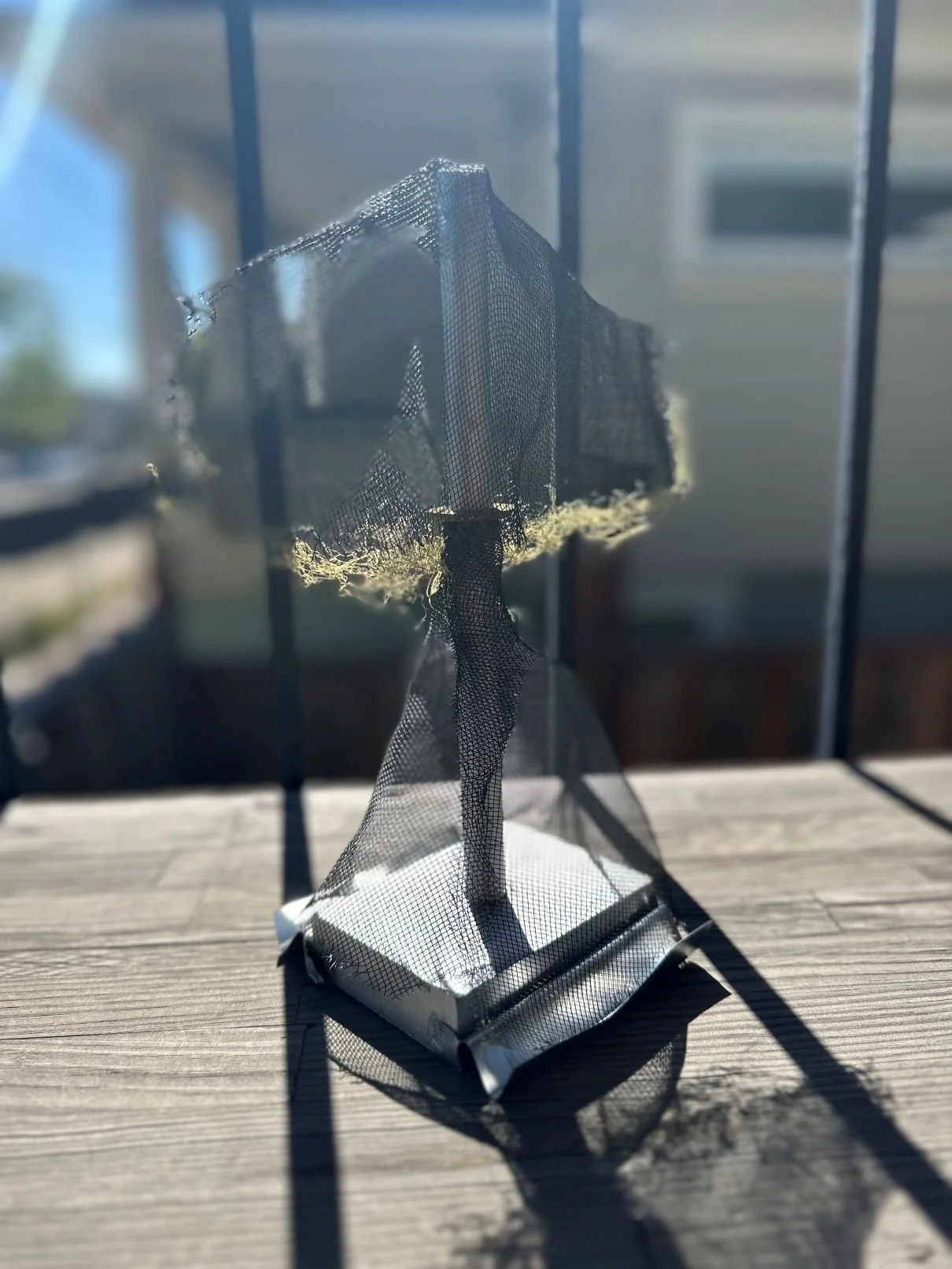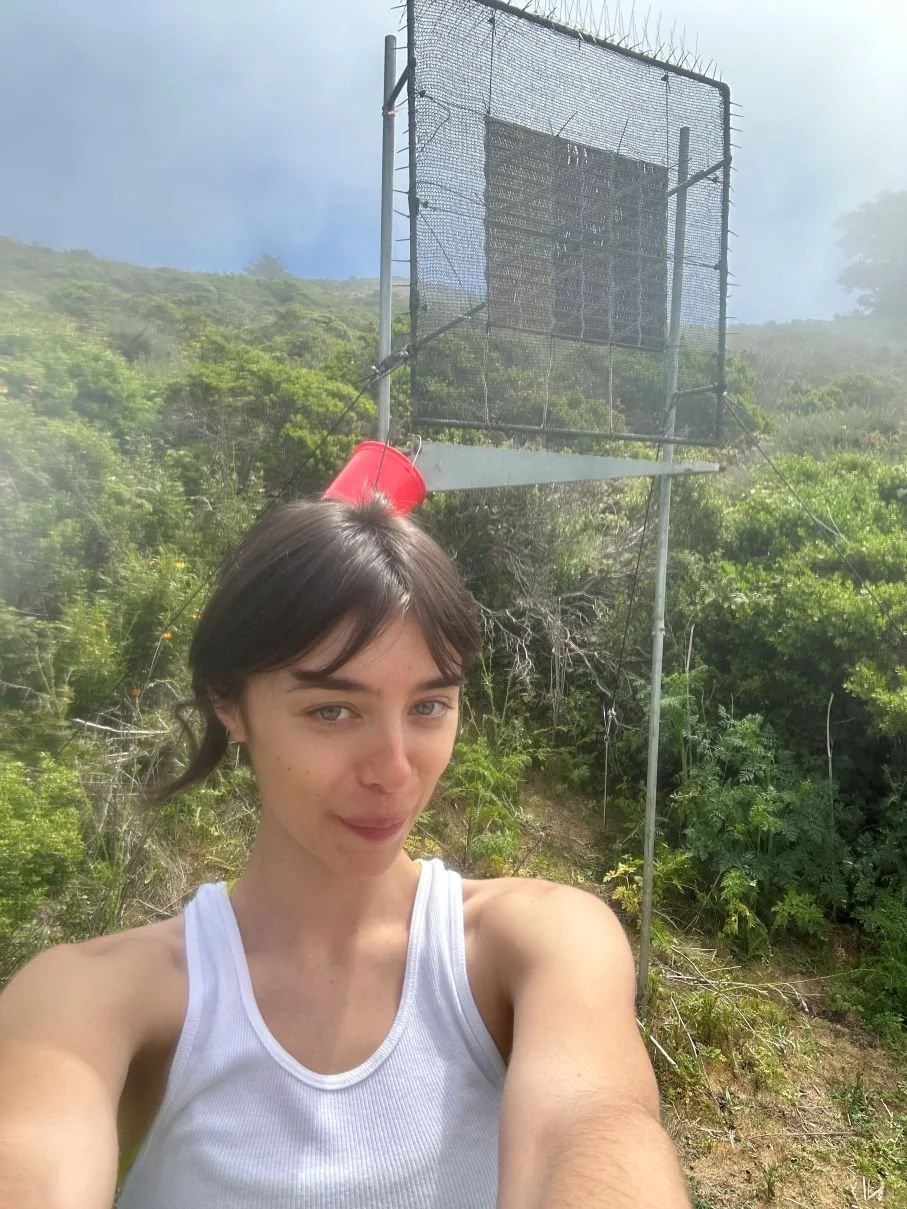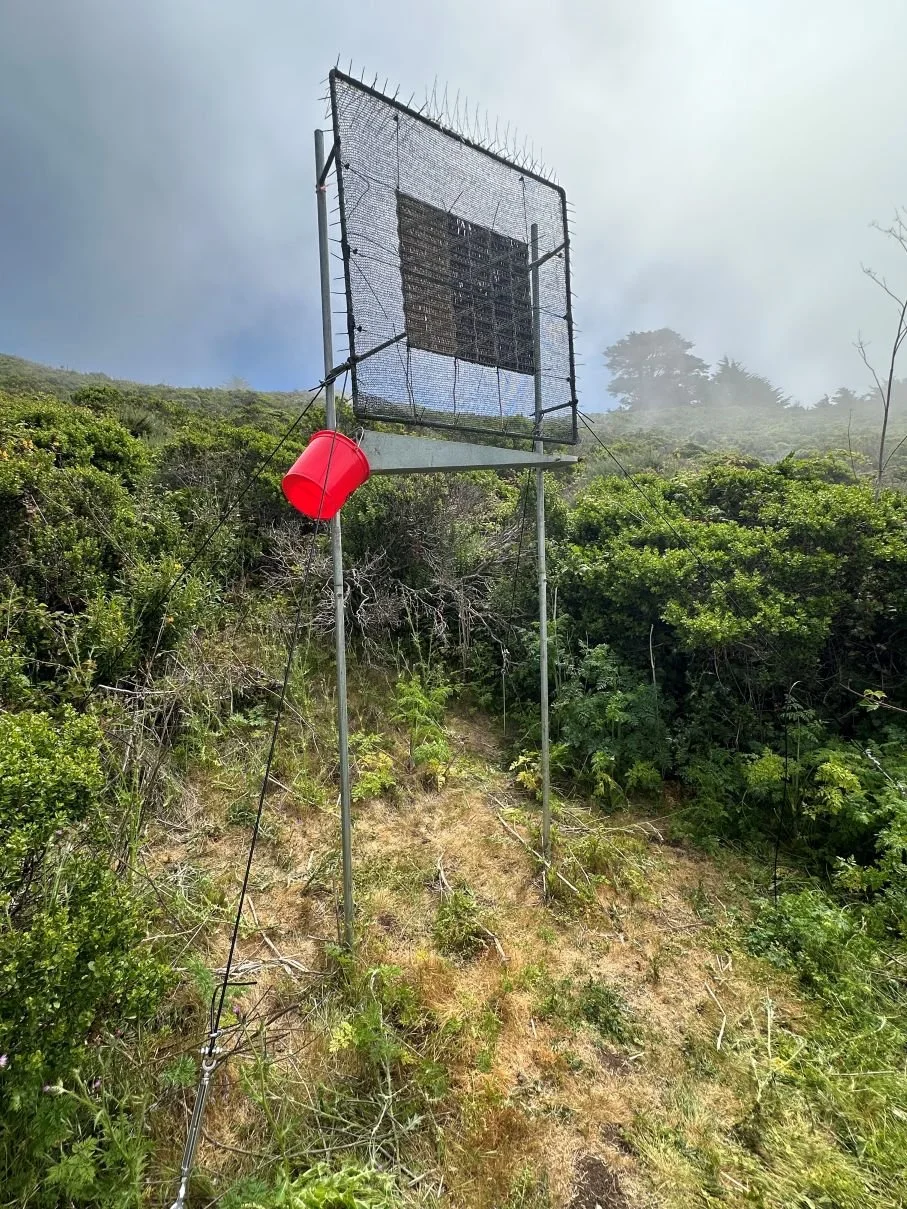Capturing Fog
Fog creates an atmospheric tone and texture that has always been a familiar comfort for me, having grown up in the California Bay Area. Fog creates a cool, grey atmospheric quality which has become nostalgic and comforting in its familiarity. Reframing fog as an under-utilized natural resource, we ask is there potential to use or redirect how we interact with fog?
Fog capture is a technology with little use precedence in the United States. This, in part, sparked our curiosity about how or if it’s currently being implemented in foggy areas (like the Bay) and where this potential could lead. Fog harvesting is more widely implemented in remote arid regions of the world, such as Chile, Morocco, and Peru where it is critical to help mitigate water scarcity and provide communities with viable drinking water.
Nico Bacigalupo Zappia and I are in the early stages of developing our sustainable design consultancy. This project at Slide Ranch serves as a launch point with the primary goal of integrating a fog collection system in Slide Ranch’s landscape and ranch operations. With this work, we are also contributing data to a larger research pool being developed on the Northern California coast focused on inspiring local communities and the general public to look at fog in a more active and engaging manner. At the root of this regenerative design is understanding the importance of site-specific work relative to climatic risk, the role a single user can have (their “handprint”), and the potential larger communal footprint. We are excited to work with Slide Ranch on this emerging area of research in this coastal bio-region in affiliation with U.C. Santa Cruz, where the Weiss Laboratory has been leading this research for years.
As this region enters its foggiest months, we have set up a standard fog collector on the property, borrowed through Peter Weiss, with a new vantage point relative to the land’s natural grading, the wind, and fog movement. Our goal is to assess where these fog collectors can capture the highest amount of water in order to optimize where to place our own fog collector in Summer 2026.
Progress and elements of our design process will be showcased at the Seymour Marine Discovery Center in Monterey Bay, California starting May 12, 2025. This is in affiliation with the team of the Art+Fog Collective operating out of U.C. Santa Cruz’s Open Lab Creative Research Center, the Weiss-Penzias Laboratory, as well as fog scientists and other artists interested in the intersection of making, fog research, and climate adaptive design. Our team is thrilled to have been invited to participate and we look forward to expanding the scope of our project’s audience to more communities. Together, we intend to find creative ways to mitigate drought risk and build a new relationship with a natural phenomena that is so dear to our coast, fog.
Pictures below include an image of a prototype design we developed for the large-scale fog collector we plan to build in 2026. In addition to standard netting, this design integrates the use of lichen as a fog absorber found in nature. This model is being showcased at the Seymour Marine Discovery Center throughout May and June 2025.




